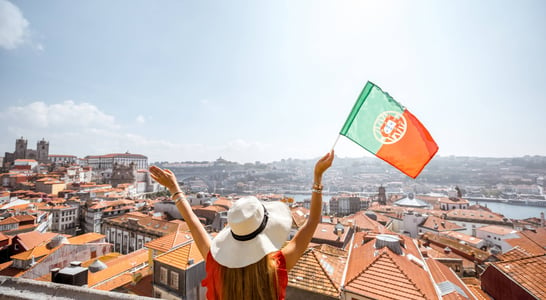
International Midwives’ Day
Doctors and hospitals are a recent development for birthing. In the past, experienced women called midwives kept new mothers and babies safe during birth.
The midwife considers the miracle of childbirth as normal and leaves it alone unless there’s trouble. The obstetrician normally sees childbirth as trouble; if he leaves it alone, it’s a miracle.
Sheila Stubbs
It’s clear to anyone who gives it half a thought that women did not always give birth in hospitals, and in fact, they most commonly would give birth in their own homes under the guide of an experienced woman.
There were those who specialized in the birthing process and who helped it come to fruition naturally, and those women were called Midwives.
International Midwives’ Day serves to remind us that the female body is perfectly capable of giving birth and carrying a child to term without some of the invasive methods employed by Obstetricians and other practitioners.
How to Celebrate International Midwives’ Day
Learn About Midwives
One of the best ways to celebrate International Midwives’ Day is by learning about Midwifery and the role it plays in home-birthing.
Show Appreciation
If you know a midwife or one helped you give birth to your child, be sure to send them a thank you card or call them and tell them you appreciate them. Midwives tend to care very deeply about the children they help bring into the world, and love updates!
Share with Others
There are a number of other steps that you can take in order to do your part of International Midwives’ Day. Why not look for different ways that you can inform the public about midwives? You could organize a high-visibility event for the day.
This includes anything from a marathon to a public performance, march, or a rally. Another option is to create a social media campaign. If you’re savvy with the Internet and you have a good online presence, you can encourage people to join in and share their own experiences regarding midwifery care.
Host a Virtual Midwifery Workshop
Invite midwives to share their experiences and knowledge in an online workshop. Community members can learn about childbirth, prenatal care, and the midwifery profession. This educational event fosters understanding and respect for midwives’ vital work.
Why Celebrate International Midwives’ Day
There are a number of different reasons why International Midwives’ Day is an important celebration. This includes the following…
- There is a shortage of midwives – When we discuss all of the amazing things that midwives do, it’s also important to take into consideration the fact that there is a shortage of midwives, especially in developing countries! This means that there are many challenges, and a lot of midwives experience a lack of support, low status, and poor pay.
- Midwives save millions of lives every year – Since 1990, the globe has seen a steady decrease in newborn and maternal deaths. One of the main reasons for this is because more women are getting skilled midwifery care.
- Midwives provide critical medical care – Not only do midwives save lives, but they also provide a wide range of other important medical services. They can perform cervical and breast cancer screenings, as well as offering counseling and services. In some countries, they are also able to carry out basic emergency obstetric care.
- Midwives are important defenders of women’s rights – Last but not least, we cannot mention the importance of midwives without discussing how they do lots in terms of advancing the rights of females around the world. They can assist survivors of gender-based violence, as well as helping to prevent female genital mutilation (FGM). The importance of their work should not be undervalued.
History of International Midwives’ Day
The history of Midwifery goes back to prehistory, though there are records all over the world of midwife traditions. These women are those who made a study of the birthing process and the vital role it plays in perpetuating the species and its cultural significance.
While it’s true in ancient days their practices were based heavily in experience and superstition, today’s midwives are just as capable and competent at seeing a woman to term as the more commonly used OB/GYN’s and Obstetricians.
Although there are men who specialize in midwifery, thousands of years of tradition has rendered this field of medicine almost exclusively a woman’s art.
So much so, in fact, that in order to be a midwife in ancient Greece you had to have given birth yourself, making it an exclusively female practice. It is this history that led to the division between Midwifery and Obstetricians, a split that took place in 17th Century Europe.
While the practice of midwifery fell off for a while in the past couple hundred years, there is a rising movement towards home birth that is making this practice more relevant than ever.
The International Day of the Midwife started in 1992 to recognize midwives’ critical role in maternal and newborn health. The International Confederation of Midwives (ICM) launched this special day after discussing the idea at a 1987 conference in the Netherlands.
Their goal was clear—highlight the profession’s importance and push for better support, training, and working conditions. Since then, over 50 countries have embraced the occasion, holding events, workshops, and campaigns to celebrate these essential healthcare workers.
There have been a number of different themes over the years for International Midwives’ Day. Typically, a new theme will be set every year. However, there have been some years whereby themes continue onto the next. Some of the themes we have seen so far include these:
- The World Needs Midwives Now More Than Ever
- Midwives Changing the World One Family at a Time
- Midwives: For a Better Tomorrow
- Women and Newborns: The Heart of Midwifery
Irrespective of the theme for the particular year, these are the three key aims when it comes to International Midwives’ Day:
- Inform everyone with an interest in both justice and health that midwives are critical in lowering neonatal and maternal mortality and morbidity.
- Celebrate the achievements of midwives, as well as their contribution to improving newborn, maternal, reproductive, and sexual health outcomes.
- Motivate policymakers to implement change by recognizing the unique professional role of a midwife, as well as lobbying for adequate midwifery resources.
International Midwives’ Day FAQs
Why is May 5th significant for International Midwives’ Day?
May 5th aligns with the spring season in many countries, symbolizing new life and growth—an apt metaphor for the work of midwives.
This date also allows global organizations to synchronize awareness campaigns during a month that celebrates family and mothers.
What are some ancient midwifery practices still used today?
In some regions, midwives still use herbal remedies passed down through generations for labor pain relief.
These traditional techniques, such as using warm compresses or birthing stools, are now integrated with modern methods in holistic birthing centers.
Do all countries recognize midwifery as a profession?
No, not all countries formally recognize midwifery as an independent healthcare profession.
In some nations, midwifery is merged with nursing, while others rely on community-trained midwives who lack official certifications.
What role do midwives play in disaster-stricken areas?
Midwives provide critical care during crises, from delivering babies in refugee camps to offering prenatal care in war zones.
Their ability to adapt and work under pressure makes them indispensable in emergencies.
Are there unique midwifery tools from the past?
Yes! In the 18th century, some midwives used a tool called the “pelvimeter” to measure pelvic dimensions. Others carried amulets or charms believed to protect mothers and babies during delivery.
What superstitions surrounded midwives historically?
In medieval Europe, midwives were sometimes accused of witchcraft because of their knowledge of herbs and childbirth. Some believed they had magical powers to influence fertility and safe deliveries.
How do indigenous communities celebrate midwives?
In parts of Guatemala, communities hold ceremonies thanking midwives for their spiritual and medical roles. These events often include blessings, gifts, and traditional dances.
Are midwives part of royal births?
Yes, midwives often assist with royal deliveries. For example, Queen Elizabeth II had midwives alongside doctors during her children’s births. Today, they remain essential to royal birthing teams worldwide.
How do countries without midwives manage childbirth?
In regions without midwives, traditional birth attendants (TBAs) fill the gap. They rely on ancestral knowledge to assist with deliveries, but the lack of formal training can lead to higher risks for mothers and babies.
What symbols represent midwifery globally?
Hands, often shown cradling a baby, symbolize midwifery’s nurturing role. In some countries, a lotus flower or stork is used to represent fertility and new life.
See what else is happening…
There’s always more going on every month at Days Of The Year. Here are our favorites this month!
Also on ...
View all holidaysNational Astronaut Day
Blast off into an out-of-this-world celebration! Learn about space, astronauts, and explore the cosmos. It's time to reach for the stars!
National Cartoonists Day
Take a walk down memory lane by revisiting the beloved, charming, often bizarre cartoons of your childhood like Calvin and Hobbes, or discover new ones.
Revenge of the Fifth
Cheering for the dark side, and finding fascination in characters who embrace their complexity and challenge traditional notions of good and evil.
We think you may also like...
International Day of Veterinary Medicine
Caring for our furry friends is a serious responsibility, and veterinary medicine is the key to keeping them healthy and happy.
National Barbie and Barney Backlash Day
Offering youngsters engaging and thought-provoking amusement, something a tad more mentally stimulating than the usual childhood favorites.








